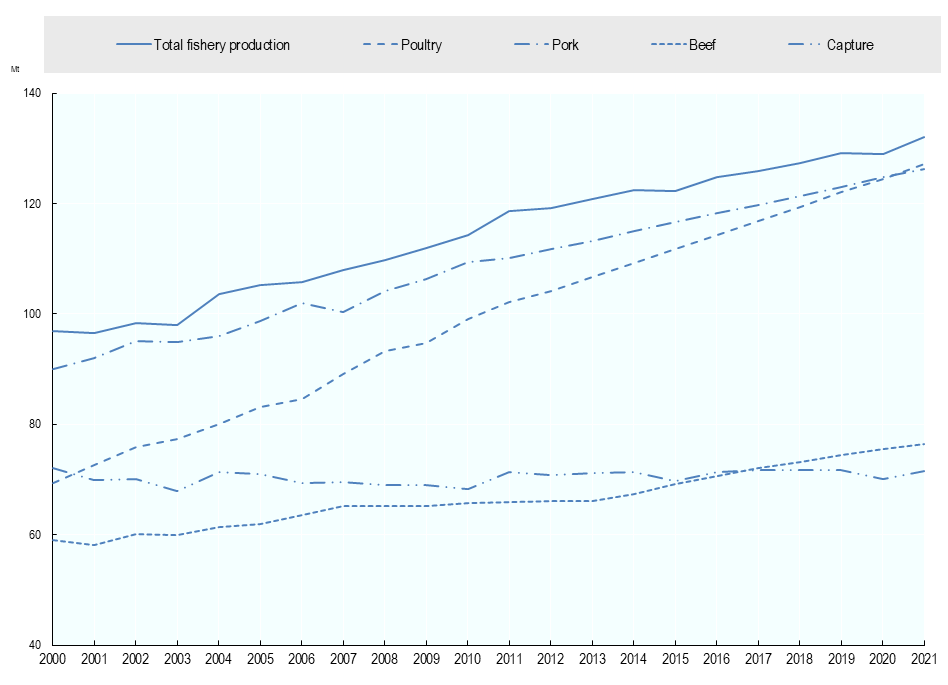1.0 Aquaculture Industry Overview
1.1 The History and Importance of Aquaculture
Aquaculture is a fascinating subject that has captivated past and present humans alike; it has been around for thousands of years, although advanced aquaculture has only been around for a few centuries. The practice of aquaculture was known to the Chinese as early as 4,000 years ago. Europeans then followed in their footsteps and created farming practices that are still used in extensive rearing systems today, such as ponds and lakes.
The importance of aquaculture is growing globally as a source of protein for a few reasons:
- Wild fish populations are declining, and current practices are unsustainable.
- Human populations are increasing, and there are increasing pressures to ensure food security.
- Fish consumption has been on the rise globally since the 1960s. The production of seafood (aquaculture and fisheries) surpasses the production of beef, pork, or poultry for its contribution to pounds of food production each year.
The 2022 Organization for Economic Cooperation and Development (OECD) and the Food and Agriculture Organization (FAO) outlook for the next decade predicts fish consumption per capita of the world population will rise faster than other meat consumption, as depicted in Figure 1.[1]

The contribution of seafood to global food security will grow as consumption grows from 20.5 kg/person to 21.4 kg/person by 2031. While aquaculture will grow significantly, the capture fisheries will hold dominance in producing some species and remain vital to national and international food security (See Figure 2).[2]

Currently, Asian countries are the top producers and consumers of seafood and are not projected to lose the top ranking. Strong production growth is expected in some major Asian producers: India (+39%), Thailand (+25%), Indonesia (+24%), the Philippines (22%), and Vietnam (+11%). Africa, America, and Europe are expected to each account for 9% of the total food fish consumed by 2031, while only 1% will be consumed in Oceania. Being the largest fish producer, China will also remain the world’s largest fish-consuming country by far, projected to account for 37% of the total food fish consumed in 2031 (aquaculture and fisheries). Pictured below is the expected growth for species that are expected to grow in all countries.
- OECD (2012), "Aquaculture keeps total fishery production volume above beef, pork or poultry: Meat and fishery production in dressed weight or eviscerated basis", in OECD-FAO Agricultural Outlook 2012: , OECD Publishing, Paris, https://doi.org/10.1787/agr_outlook-2012-graph88-en. ↵
- OECD/FAO (2022), OECD-FAO Agricultural Outlook 2022-2031, OECD Publishing, Paris, https://doi.org/10.1787/f1b0b29c-en ↵

